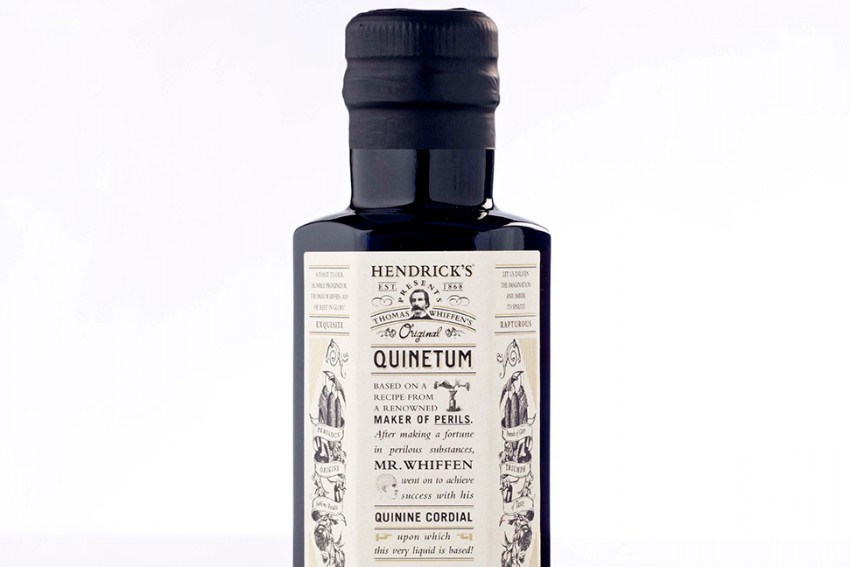Gin & tonic – contemporary economic botany

Gin marvellously illustrates the importance of plants.
Adelaide Botanic Gardens recently hosted Jon Lark – the distiller of KIS gin from Kangaroo Island – and writer Philip White to reinforce the connection between people and plants (okay, there may have been some other motives here). Botanic gardens make a fine venue for exploring gin. All flesh is grass – our energy, our biochemistry and our ideas are assembled on the foundation of plants transforming sunlight into both an accessible form of energy and the molecular building blocks for our biochemistry. Gin’s assembly transforms this sunlight stored in various plant organs into a spirit through fermentation and distillation. Historically, gin is derived from barley and rye, although ‘modern’ gin utilises a range of agricultural crops including potato tubers, sugar cane an grapes. Modern distilling provides a purer spirit, and the botanical flavourings become a critical dimension in the assembly of modern gins. Juniper remains the major botanical – indeed gin derives from jenever – the Dutch word for juniper. However, contemporary gin utilises a range of major botanicals and a rich diversity of minor botanicals that present the distiller with an almost limitless palette. One of the major botanicals that was mercifully abandoned in the production of gin in the 20th century was wood turpentine – distilled from resins tapped from the terebinth (or turpentine – Pistacia terebinthus) and various pines – utilised, ‘to generate resinous woody notes’. Having listened to Jon and Philip’s eloquent accounts of the origins of gin I’m reluctant to tackle gin in this column – I suggest trying Lark’s KIS gin and keeping an eye on White’s Drinkster blog. However, I feel better qualified to tackle some elements of the tonic that often accompanies gin. My experience here as a patient-botanist provide some insights beyond drinking gin & tonic. The worst bout of malaria (Plasmodium falciparum) I’ve had had progressed too far for the usual (in Tanzania at least) artemesinin drugs to be effective – artemesinin is a drug developed in China based on a traditional Chinese medicine using Chinese wormwood (Artemisia annua). However, on this occasion, I was prescribed quinine – unfortunately in tablet form rather than via gin & tonic. While quinine is included in tonic water, the dose in commercial tonics is minimal. The side effects of the quinine were unpleasant but certainly an improvement on malaria (the most alarming side-effect of the quinine was significant hearing loss that took some time to be found again). Quinine is derived from the bark of Cinchona species – a genus including 23 species of trees and shrubs native along the Andes from Bolivia and Peru to northern Columbia and Venezuela. Cinchona calisaya and C. pubescens are the most important species in the plantations that now provide bark for quinine production. Cinchona bark followed the usual path of the Colombian exchange – the value of cinchona bark in countering fevers known to the Incan people in Peru was observed by Europeans, and subsequently both the bark and this knowledge transferred to Spain and Italy. Whether malaria was native to South America remains a contentious issue, although the use of cinchona bark by the Incans in its treatment is well established. The introduction of cinchona bark to Europe is variously accorded to Countess Ana of Chinchón (wife of the Spanish Viceroy of Peru who was reputedly cured of malaria in 1638), and, more compellingly, to the Catholic Church in Peru, and especially the Augustinians and Jesuits in the 1630s. The success of cinchona bark in controlling malaria makes Cinchona one of the most critical medicinal discoveries in history. The subsequent origins of tonic water are attested to by the 700 tons of cinchona bark imported to India annually from Peru by the British in the 1840s as prophylaxis against malaria – the bitterness of the quinine made more palatable with the addition of sugar, soda and gin. The ethanol in the gin would also ensure that cinchona alkaloids not soluble in water would be accessible, and the bubbles in the soda speed the entry of alcohol to the bloodstream. Tonic water was first patented by Erasmus Bond in London in 1858. Winston Churchill is supposed to have observed, “The gin & tonic has saved more Englishmen’s lives, and minds, than all the doctors in the Empire”. Stephen Forbes, Director, Botanic Gardens of South Australia @StephenJForbes